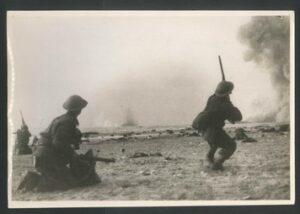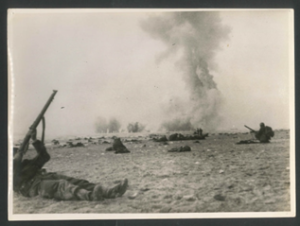Forgotten Friday – Dunkirk Evacuation
In today’s Forgotten Friday, we are studying the Evacuation of Dunkirk.
Operation Dynamo, also known as the evacuation from Dunkirk, involved the rescue of more than 338,000 British and French soldiers from the French port of Dunkirk between 26th May and 4th June 1940. The evacuation, sometimes referred to as the ‘Miracle of Dunkirk’, was a big boost for British morale. Prime Minister Winston Churchill recognised however that the greatest challenge still lay ahead, as Nazi ambitions now turned toward Britain.[1]
Prior to the operation, British, French, Belgian, and Canadian troops had been forced back to Dunkirk by the advancing German army. Nearly all the escape routes to the English Channel had been cut off; and the disaster was pending. Prime Minister Winston Churchill called it “a miracle of deliverance”.
On 12th May 1940, Hitler ordered the invasion of France, and by 14th May 1940, German tanks had crossed the Meuse and had opened a gap in the Allied front. Six days later they reached the English Channel. A huge scare for Britain.

(C) Eden Camp Archives, May 2023
The British, French and Belgium governments had seriously underestimated the strength of the German forces during this attack. As a result of this, the British Expeditionary Force (BEF), as well as French, Canadian and Belgian troops, found themselves fighting against overwhelming odds. Before long, the Allied forces had retreated to the harbour and beaches of Dunkirk where they were trapped. They were then seen as a sitting target for the Jerry army.
In an effort to at least evacuate some of the troops, just before 7pm on the 26th of May, Winston Churchill ordered the start of ‘Operation Dynamo’. This plan took its name from the dynamo room (which provided electricity) in the naval headquarters below Dover Castle, where Vice Admiral Bertram Ramsay had planned the operation.
After discussion, many destroyers and transport ships were sent to Dunkirk evacuate the troops, but they only expected to have time to lift off around 30,000 troops.
However, in one of the most widely debated and potentially pivotal decisions of the war, Adolf Hitler ordered his generals to halt for three days, giving the Allies time to organise the evacuation. In the end, despite heavy fire from German fighter and bomber planes on the beaches, no full-scale German attack was launched and over 330,000 Allied troops were eventually rescued.

(C) Eden Camp Archives, May 2023
The evacuation itself proved extremely difficult and debated to be overwhelming. Before long the harbour became partially blocked by ships sunk during the constant raids from enemy aircraft. It became necessary to take the troops off the nearby beaches. This was an almost impossible task because of shallow water which prevented large ships from coming in close to shore. Small ships were needed to ferry the troops from the beaches to the larger ships. Which appeared to withstand its own timing issues.
Between 27th May and 4th June 1940, nearly 700 ships brought over 338,000 people back to Britain, including more than 100,000 soldiers of the French Army. All heavy equipment was abandoned and left in France, including over 2,000 pieces of artillery and 85,000 motor vehicles. Also left behind were more than 440 British tanks that had been sent to France with the BEF.
The escape captured the minds and hearts of the British people at a time when it seemed that they too would soon be invaded. What was a defeat appeared like a victory when so many men were brought back safely to England… The ‘Miracle’ of Dunkirk.

(C) Eden Camp Archives, May 2023
The phrase “Dunkirk spirit” is still in use today to describe British people banding together in the face of adversity.[2]
[1] https://www.iwm.org.uk/history/what-you-need-to-know-about-the-dunkirk-evacuations
[2] https://www.historic-uk.com/HistoryUK/HistoryofBritain/Evacuation-of-Dunkirk/

